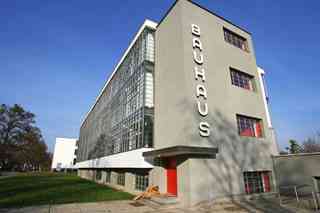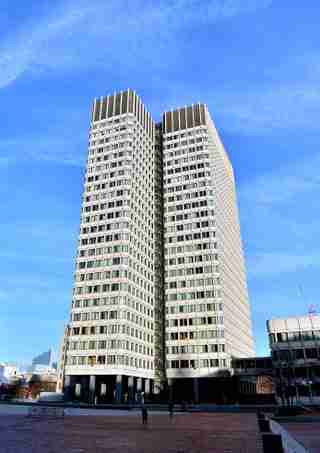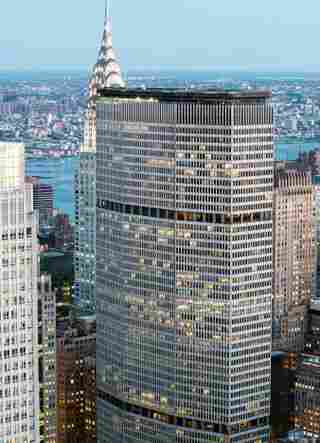While perhaps not as famous as his contemporaries Ludwig Mies van Der Rohe and Frank Lloyd Wright , Walter Gropius had an equally large influence on modern architecture. The great-nephew of famed German architect Martin Gropius, Walter Gropius studied in Munich and Berlin and began his career in the office of Peter Behrens. Gropius left to start his own firm with Adolf Meyer in 1910. Together they designed the Fagus-Werk Factory, one of the earliest examples of modern architecture. Following World War I, Gropius founded the Bauhaus in Weimar, Germany. The school’s mission was to unify arts and craftsmanship, and its instructors and graduates include a who’s who of 20th-century art and design luminaries, among them Marcel Breuer, Wassily Kandinsky, Paul Klee, Josef Albers, and Mies van der Rohe. Gropius left the Bauhaus in 1928, and in 1937 he moved to the U.S., where he began teaching at the Graduate School of Design at Harvard. The architect, who died in 1969, is remembered for many innovative buildings, including the Bauhaus School in Dessau, Germany, the Gropius House in Massachusetts, Manhattan’s Pan Am Building (now the MetLife Building), and the John F. Kennedy Federal Building in Boston.

The Bauhaus moved from Weimar, Germany, to the town of Dessau in 1925. Gropius’s new school building opened in 1926. The design includes three wings divided by function (workshops, school, and administration) and features a glass curtain wall accentuated by a steel frame. The building, along with the nearby Masters’ Houses, was named to the UNESCO World Heritage list in 1996.

Gropius and the Architects Collaborative, the firm he founded in 1954 after immigrating to the U.S., received a commission from the government to build a new federal building in Boston in 1961. The modern structure, which is made up of two 26-story towers and a four-story building, was completed in 1966 and dedicated in honor of President John F. Kennedy.

Designed in collaboration with fellow architect Pietro Belluschi and the firm Emery Roth & Sons, Gropius’s highly controversial Pan Am Building (now known as the MetLife building) was completed in 1963. The 58-story octagonal structure towers over Manhattan’s Grand Central Terminal and was constructed using 9,000 precast-concrete panels.
The Fagus-Werk Factory in Alfeld, Germany, was designed by Gropius and Adolf Meyer in 1911 and is considered one of the earliest examples of modern architecture. The ten-building complex is noted for its glass-and-steel curtain walls and support-free corner windows and was named a UNESCO World Heritage Site in 2011.
When the architect came to America and began teaching at Harvard in the late 1930s, he built a family home in nearby Lincoln, Massachusetts. Gropius House utilized many of the region’s traditional building materials, mixing them with industrial elements and modern techniques. The home opened as a museum in 1985.
Gropius designed this nine-story housing unit in Berlin as part of 1957’s Interbau exhibition. Fifty-three architects from around the world, including Oscar Niemeyer and Arne Jacobsen, contributed to the complex in the Hansa neighborhood, which was billed as “a city of tomorrow.”
The architect’s initial design for the Bauhaus Archive was set in the German town of Darmstadt; following his death, however, it was built (with adjustments by architect Hans Bandel and Gropius’s former student Alex Cvijanovic) in Berlin. The structure houses artifacts from the school and works by students and teachers. The building begins renovations next year in preparation for the 100th anniversary of the Bauhaus in 2019.
